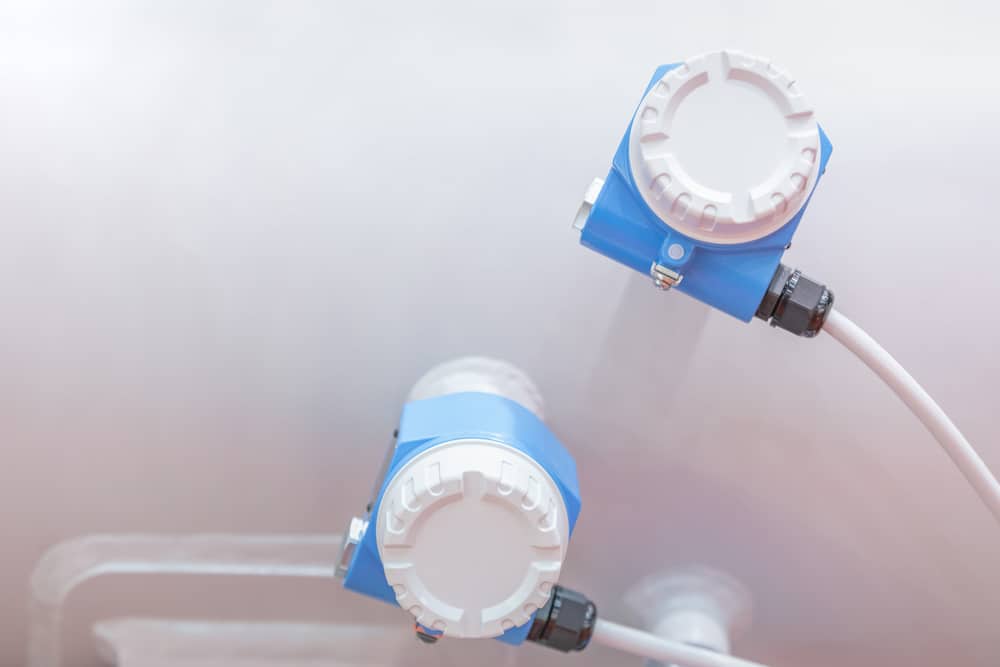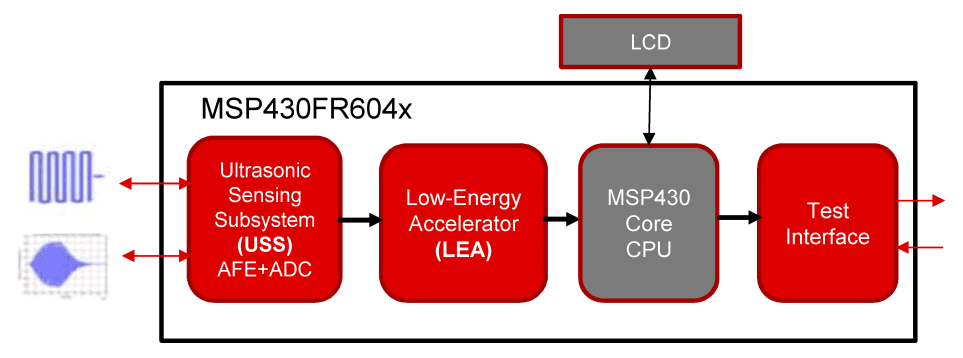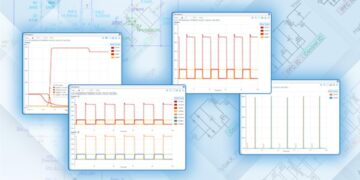
Position sensing is one of the simplest types of sensing that can be implemented in a device. Beginner’s platforms like Arduino give designers access to add-on ultrasonic sensor modules that enable highly accurate position sensing in a compact package. However, the designer who needs to build a highly integrated system that includes ultrasonic sensing needs an analog front-end that can interface with their sensor unit and a host controller to collect and process data.
Texas Instruments’ popular line of MSP430 MCUs is highly successful in all-digital applications and mixed signal products, including wireless products, sensing platforms, and high speed peripherals. In addition to these important areas, the MSP430 product line includes a set of MCUs with an integrated analog front-end specifically designed for interfacing with ultrasonic sensors. The TI ultrasonic sensor platform targets areas like industrial automation, robotics, security, and any other area where highly accurate ultrasonic sensing is required.
Designing With the TI Ultrasonic Sensor Platform
TI’s MSP430 product line comprises multiple part numbers with an array of interfaces, allowing an MSP430 product to be selected to target very specific applications. The ultrasonic sensor platform from TI contains a set of 9 MCUs (PNs: MSP430FRxxxx) with an integrated analog front-end to capture and process signals from sensors. Each of the part numbers in this line has different amounts of memory, GPIO counts, and ADC channels. These components have additional features that allow them to interface with peripheral ASICs and act as a primary host controller for a highly integrated sensing system.
Designing With Ultrasonic Sensors and MSP430
The table below provides a comparison of the MSP430 MCUs in the TI ultrasonic sensor platform. These MCUs are distinguished by part number suffix and integrated features, giving designers plenty of flexibility when selecting an MSP430 MCU as a host controller.
| Clock frequency | 16 MHz (all part numbers) |
| Bus count | 2x I2C, 6x SPI, 4x UART (all part numbers) |
| GPIO count | – 44 (MSP430FR5xxx)
– 57 or 80 (MSP430FR6xxx) |
| Comparator channels | – 12 (MSP430FR5xxx)
– 12 or16 (MSP430FR6xxx) |
| ADC resolution | – 12-bit SAR, 8 MSPS (all part numbers) |
| ADC channels | – 8 (MSP430FR5xxx)
– 8 or 16 (MSP430FR6xxx) |
| Memory | – NVM: up to 256 KB
– RAM: up to 32 KB |
| Integrated USB access | MSP430FR5xxx only |
| Packaging options | – LQFN or VQFN (MSP430FR5xxx)
– LQFN only (MSP430FR6xxx) |
The above table shows how the MSP430 platform balances the need for highly accurate ultrasonic sensing with its typical use as a system-level host controller for digital components. The role of these MSP430 MCUs in an ultrasonic sensing platform is to collect the ultrasonic signal reflected from a distant object, calculate a time-of-flight value, and implement logical operations with the result to implement some other functionality. Sensing modalities include:
- Liquid concentration sensing
- High-resolution anemometer
- Ultrasonic surface sensing
- Ultrasonic leak detection
- Oxygen concentration sensing
The MSP430 integrates the analog front-end required to implement emission and reception of ultrasonic pulses with an appropriate sensor. The 8 MSPS sigma-delta ADC in these MSP430 MCUs supports ultrasonic sensors operating well into the high kHz range. This is a reasonable ultrasonic frequency range that many commercial sensors can emit, and the list of applications above typically operate at these frequencies. In addition, this allows a commercial sensor to connect directly to the analog front-end with a minimal peripheral count.
An example block diagram used for a typical ultrasonic sensing system is shown below. Here, all driver configuration and processing functions are performed on the MSP430 MCU, eliminating the need for an external pulse driver. The received waveform can be processed directly by the MSP430 and used within a larger application. The IO and bus count in these MSP430 components is high enough that peripherals (e.g., the LCD screen indicated below) can be controlled alongside the main sensor.

TI ultrasonic sensor platform block diagram implemented on the MSP430FR604x. [Source]
Reference Designs and Developer Resources
The TI ultrasonic sensor platform based on MSP430 MCUs includes two reference designs that designers can use for application development and testing:
- TIDM-02003 – This reference design is an ultrasonic sensing subsystem for gas flow measurement. This design includes USB connectivity for flashing and extracting data into an external application.
- TIDM-1019 – This reference design is built for water level sensing. The design includes ESD protection measures that would be expected in an industrial environment.
TI also provides an evaluation module along with the Ultrasonic Sensing Solution (USS) software library and code examples to help designers get started developing new ultrasonic sensing applications with MSP430 MCUs. Additional application-specific software is available at the MSP Ultrasonic Design Center. Users can download the MSPWARE library and Code Composer Studio to get started with application development. Once an application is developed and ready for testing, it can be compiled to binary and flashed onto a new design with the UNIFLASH utility.
When you need to find the right MSP430 for your system and work with the TI ultrasonic sensor platform, you can find the parts you need with the search features in Ultra Librarian. The Ultra Librarian platform gives you access to PCB footprints, technical data, and ECAD/MCAD models alongside sourcing information to help you stay ahead of supply chain volatility. All ECAD data you’ll find on Ultra Librarian is compatible with popular ECAD applications and is verified by component manufacturers to help streamline your designing process.
Working with Ultra Librarian sets up your team for success to ensure streamlined and error-free design, production, and sourcing. Register today for free.








